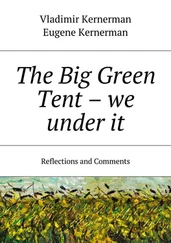Herbert Tiedemann - Babi Yar - Critical Questions and Comments
Здесь есть возможность читать онлайн «Herbert Tiedemann - Babi Yar - Critical Questions and Comments» весь текст электронной книги совершенно бесплатно (целиком полную версию без сокращений). В некоторых случаях можно слушать аудио, скачать через торрент в формате fb2 и присутствует краткое содержание. Жанр: История, на английском языке. Описание произведения, (предисловие) а так же отзывы посетителей доступны на портале библиотеки ЛибКат.
- Название:Babi Yar: Critical Questions and Comments
- Автор:
- Жанр:
- Год:неизвестен
- ISBN:нет данных
- Рейтинг книги:4 / 5. Голосов: 1
-
Избранное:Добавить в избранное
- Отзывы:
-
Ваша оценка:
- 80
- 1
- 2
- 3
- 4
- 5
Babi Yar: Critical Questions and Comments: краткое содержание, описание и аннотация
Предлагаем к чтению аннотацию, описание, краткое содержание или предисловие (зависит от того, что написал сам автор книги «Babi Yar: Critical Questions and Comments»). Если вы не нашли необходимую информацию о книге — напишите в комментариях, мы постараемся отыскать её.
Babi Yar: Critical Questions and Comments — читать онлайн бесплатно полную книгу (весь текст) целиком
Ниже представлен текст книги, разбитый по страницам. Система сохранения места последней прочитанной страницы, позволяет с удобством читать онлайн бесплатно книгу «Babi Yar: Critical Questions and Comments», без необходимости каждый раз заново искать на чём Вы остановились. Поставьте закладку, и сможете в любой момент перейти на страницу, на которой закончили чтение.
Интервал:
Закладка:
Given the local support for the Jews, how can one also explain letters of denunciation by the laundry-basketfull? And how the short-staffing?
According to Soviet researches, 100,000 people were murdered in Babi Yar, including gypsies and Soviet prisoners-of-war.
What documents are there to prove the total of 100,000? Does the claim that in Babi Yar also prisoners-of-war were murdered not make Khrushchev's criticism of Stalin even more significant?
As of mid-August 1943 the graves were opened with bulldozers, but the bodies were transported by fettered inmates, among them 100 Jews.
Did the Germans have bulldozers? Is this sort of equipment used in a narrow ravine?
Do the air photos give any indication of such activities? Why bulldozers, if the main part of the work had to be done by slaves in chains? Where did the 100 Jews come from?
The bodies were burned on a base of railroad tracks and on pyres of tree trunks, for which purpose they were doused with gasoline.
Where did the enormous quantities of railroad tracks and firewood come from, especially in view of the advancing Russian front? Whence the gasoline, which was not even in adequate supply for tanks and the Luftwaffe?
The bones were crushed on gravestones from the Jewish Cemetery.
Gravestones for crushing bones? Evidence?
The cremation lasted from August 18 to September 19, 1943.
The ashes were screened and sifted in order to retrieve all of the gold and silver.
How long would it take to screen and sift all the ashes, along with everything that had become mixed with them?
To where did the gravestones and the ashes go?
After the bodies were cremated, 15 prisoners escaped.
Jews were not mentioned as victims in the inscription on the memorial erected in 1974. Modified in 1991, the inscription now also commemorates the Jews (German edition). Why did the first inscription withhold the information that there were Jews among the victims?
7. About two weeks after the recapture of Kyiv in late 1943, the western journalists who had been invited[21] Were told that six weeks earlier the Germans had finished the blasting, exhumation and open-air incineration of 70,000 bodies, the crushing of the unburned bones and the bulldozing of the material into the ravine.
• What happened to the difference of 30,000 bodies, and where are all the witnesses for these blazing fires, for the clouds of smoke and the infernal stench? It ought to have been an easy matter for the Soviets to procure evidence and witnesses to prove all these claims to the journalists - or perhaps not? Why did the physical evidence fail to impress the journalists?
8. On the fiftieth anniversary (1991) of the German 'attack' on the Soviet Union, the ZDF (German Television) broadcast a film series by Guido Knopp, who had produced it in collaboration with Gostelradio, a Soviet state undertaking which even then was at times still strictly controlled by the KGB. In the course of this broadcast series, Babi Yar was also discussed (June 18, 1991).
• A woman named Sheila Polischtschuk recounted roughly the same as set out above in Section 4 Part 9. Her mother had thrown herself and her child, Sheila, into the ravine. Mother and daughter were covered up by more and ever more bodies. The mother had pushed her fists under her daughter's neck so she would not drown in the blood. A soldier allegedly stood on her mother and thus missed her with the bayonet. The mother managed to work her way out from under this mountain of corpses, taking her unconscious daughter with her.
• A 'ravine' was shown, which looked more like a 30-ft.-deep and 65 to 100-ft.-wide gravel pit.
• Another picture, taken at an angle from behind, showed a row of fully dressed (!) persons at the edge of a pit, with their backs to the pit.
• A film of an 'interrogation' from Stalin's days was shown; the interrogatee admitted having shot 120 persons. Six men had been assigned as guards and six as execution commando. He claimed to have shot about 120 people in a period of 36 hours.
Given the killing rate admitted to by the interrogatee, it would have taken about 10,131 hours to manage the 33,771 executions claimed in the ZDF broadcast.
• How did Sheila Polischtschuk's mother manage to turn herself and her daughter around 180 degrees and to throw herself head over heels into the ravine without either of them sustaining bruises or broken bones and without either of them crying out? If the mother had to keep the child from drowning in the blood, then the daughter must have lain practically at the bottom of the ravine, i.e., she and her mother were among the first victims. So the piles of corpses lying on both of them must have been an enormous weight.
• If mother and daughter were underneath many bodies, how could the soldier stand on the mother?
• If the soldier stood on the mother - in other words, if the other part of the story is not true - then why did his bayonet not strike mother or daughter after he had changed his position?
• If the mother could work her way out from under a mountain of corpses, then in order to free her daughter she would have had to move other bodies around. After all, the bodies were not lying there neat and orderly, they were quite entangled! Why did the guards not notice her activity?
• And for the sake of a bit of variety, other sources also tell of escaped mothers. Jean-François Steiner's book[64] is based on many instances of alleged eyewitness testimony and claims that "Ivan", who was later promoted to "the Terrible", was killed during the Treblinka revolt (which claim, however, was rescinded during Demjanjuk's first trial). This book tells of a very similar case which allegedly took place at about the same time, in Ponar near Vilna. Driven into a corner, Steiner admitted that his book was really just a novel (but the Brockhaus Enzyklopädie quotes it as factual source in its article on Treblinka!). Kuznetsov's book[39] and Schindler's List[65] are also works of fiction!
• Other questions regarding Knopp's film:
• Despite all the top secrecy, who managed to take a photo of the victims lined up to be shot? Who, furthermore, managed to do this from a clearly visible vantage point and even potentially within the scatter field of the machine gun fire? Why does the rather out-of-focus picture reveal characteristics common to many other falsified propaganda pictures? Why are the people dressed? According to the witness, six men were designated as execution commando and six as guards. Where did the 'bayonet men' come from? How many prisoners or groups can be guarded by six men?
9. Novelist Guido Knopp[66] writes in the left-hand column of page 132 of his book:
"[...] many soldiers stood with machine guns. [...] They led us to a ravine, where big boxes stood, in which they collected the documents and other things. [...] Then an execution commando took up position. Mother did not wait for the commando, she threw herself and me into the pit and fell on me. The special units began to cover us over with dead bodies. After that they shot another group. [...] A soldier stood on my mother and stabbed the wounded man lying beside her. When they passed on to share the spoils, mother pulled me out unconscious and carried me away."
In the right-hand column of the same page, however, we read:
"When they arrived at the ravine after the beating, they had to lie down on the ground in rows, in small groups. Then the execution commando went into action. A burst of machine gun fire, a few shovels of earth that only barely covered the bodies, and then the next group was driven into the ravine."
• How does Knopp imagine the machine gun execution of victims that are lying down?
Читать дальшеИнтервал:
Закладка:
Похожие книги на «Babi Yar: Critical Questions and Comments»
Представляем Вашему вниманию похожие книги на «Babi Yar: Critical Questions and Comments» списком для выбора. Мы отобрали схожую по названию и смыслу литературу в надежде предоставить читателям больше вариантов отыскать новые, интересные, ещё непрочитанные произведения.
Обсуждение, отзывы о книге «Babi Yar: Critical Questions and Comments» и просто собственные мнения читателей. Оставьте ваши комментарии, напишите, что Вы думаете о произведении, его смысле или главных героях. Укажите что конкретно понравилось, а что нет, и почему Вы так считаете.










